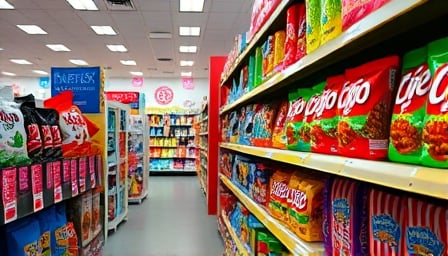Monde Chips: Market‑Cap Momentum Amid Stable Fundamentals
Mondelez International Inc. (NASDAQ: MDLZ) has recorded a moderate but steady rise in its share price, moving from approximately $43.56 a decade ago to the current level. The upward trajectory has contributed to a substantial increase in the company’s market capitalization, underscoring the long‑term value investors have realized from the snack‑food conglomerate.
Sector‑Specific Dynamics and Competitive Positioning
Mondelez operates in a mature, consumer‑goods sector characterized by high brand equity, extensive distribution networks, and a diverse portfolio of packaged products. Its core revenue drivers—chocolate, biscuits, salty snacks, and confectionery—continue to enjoy robust demand across both developed and emerging markets. The firm’s global reach provides a hedge against regional fluctuations, while its scale enables cost efficiencies in manufacturing, procurement, and marketing.
In the competitive arena, Mondelez competes with both global giants such as Nestlé and PepsiCo and niche players that focus on specialty or health‑oriented segments. The company’s ability to maintain premium pricing on flagship brands (e.g., Oreo, Cadbury, Toblerone) reflects strong consumer loyalty, an attribute that has historically insulated its revenue streams from cyclical downturns.
Market Trends and Economic Factors
The Nasdaq‑100 index recorded a marginal uptick on the day of the latest price movement, yet Mondelez’s share price displayed relative independence from broader market swings. This decoupling is attributable to the firm’s defensive positioning—essential consumer staples tend to perform consistently even in volatile macroeconomic environments.
On a macro scale, the company is exposed to a range of global economic drivers: inflationary pressures affecting raw‑material costs (e.g., cocoa, wheat, and sugar), commodity price volatility, and shifts in consumer discretionary spending. While the firm’s pricing strategy has successfully transferred some input cost increases to consumers, sustained inflation could erode profit margins if input costs rise more rapidly than pricing power.
Geopolitical tensions and evolving trade policies also represent potential risks. Tariffs on key commodities or export restrictions could disrupt supply chains, particularly for raw materials sourced from politically sensitive regions. Nonetheless, Mondelez’s diversified sourcing strategy and long‑term contracts with suppliers mitigate some of these exposure points.
Outlook and Strategic Adjustments
In the absence of any immediate operational shocks or headline‑making events, Mondelez’s management appears focused on reinforcing its core business while exploring avenues for sustainable growth. Strategic priorities include:
- Portfolio Optimization – Continuing to divest underperforming brands while investing in high‑margin segments such as premium and health‑oriented products.
- Supply‑Chain Resilience – Strengthening sourcing diversification and employing advanced analytics to anticipate commodity price movements.
- Geopolitical Risk Monitoring – Maintaining active dialogues with policymakers and adapting trade strategies to navigate emerging tariff regimes.
Investors who committed to Mondelez a decade ago now benefit from a commendable return on capital, as evidenced by the steady appreciation in share price and the firm’s consistent market‑cap expansion. While external factors such as global trade dynamics and inflation remain pertinent, the company’s entrenched brand value, scale advantages, and resilient demand position it well to weather short‑term volatility and continue delivering long‑term shareholder value.
